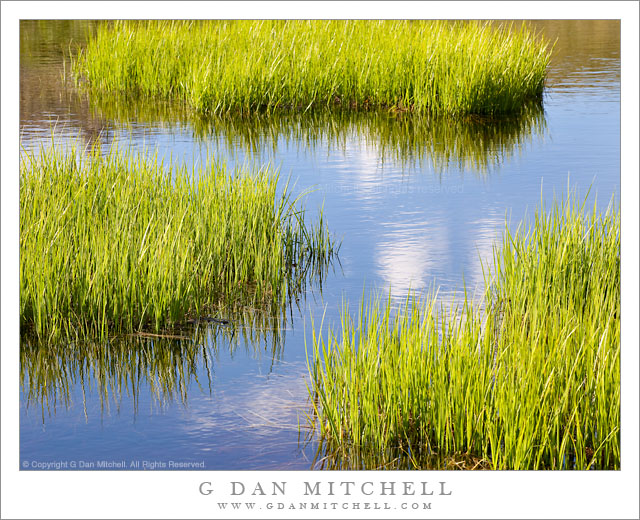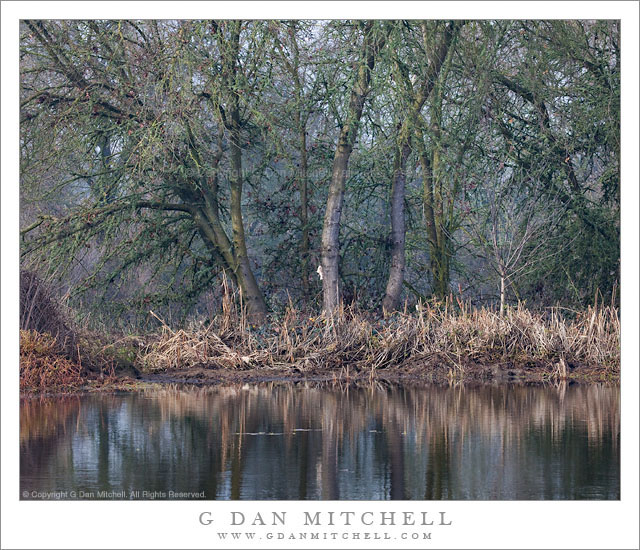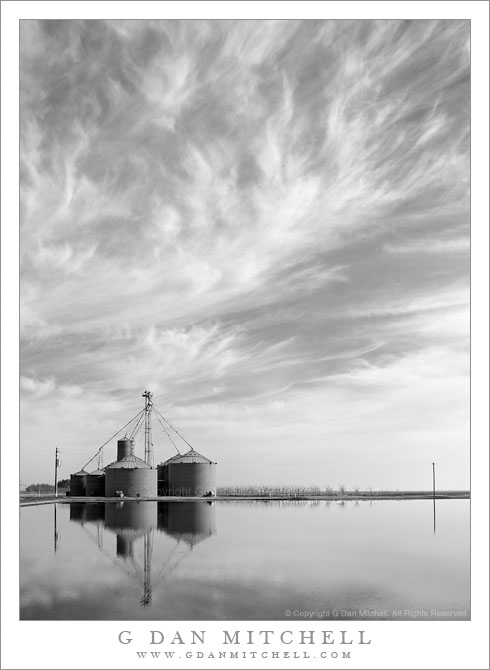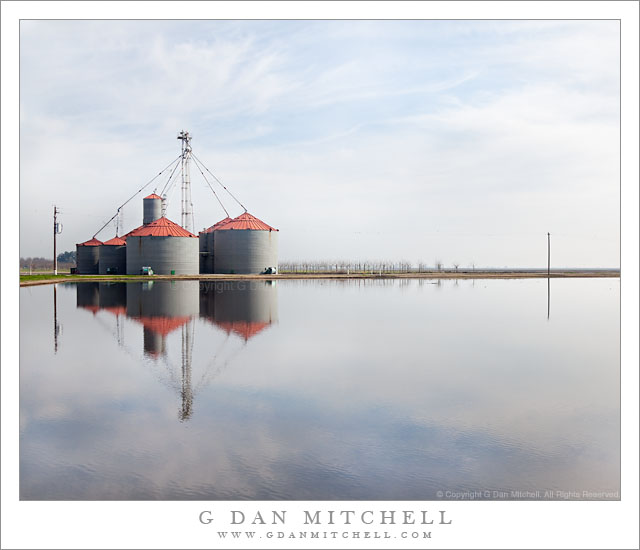Shoreline Grasses and Subalpine Pond. Yosemite National Park, California. July 22, 2010. © Copyright G Dan Mitchell – all rights reserved.
Passing clouds reflected in the surface of a subalpine pond with summer meadow grass, Tioga Pass, Yosemite National Park.
I made this photograph on a special afternoon late last July. Although I had been across Tioga Pass earlier in the season when it was still very snowy, this was my first real visit to the summer high country of the season. It was a beautiful, sunny afternoon with just a few fluffy clouds floating about when I came to the meadows near Tioga Pass. The color of the meadow grasses was at just that perfect point that we think of when we imagine summer subalpine meadows – the intense green just before the wildflowers bloom and the inevitable change toward fall begins. (Yes, after some summers in the high country this cycle becomes clearer and clearer.)
I left my car, loaded up a pack of camera equipment, and just wandered the meadow for a good portion of the late afternoon, photographing the grass, the small trees, brooks and snow-melt ponds, and more. By sauntering about with no particular destination in mind I was able to “follow my nose” and find things that I had not seen in this meadow before, including more ponds than I had been aware of. These grasses were growing along the edge of an obscure pond with a complex and curving shoreline, and I photographed them as a few of those small clouds floated by.
G Dan Mitchell Photography | Flickr | Twitter (follow me) | Facebook (“Like” my page) | LinkedIn | Email
Text, photographs, and other media are © Copyright G Dan Mitchell (or others when indicated) and are not in the public domain and may not be used on websites, blogs, or in other media without advance permission from G Dan Mitchell.




